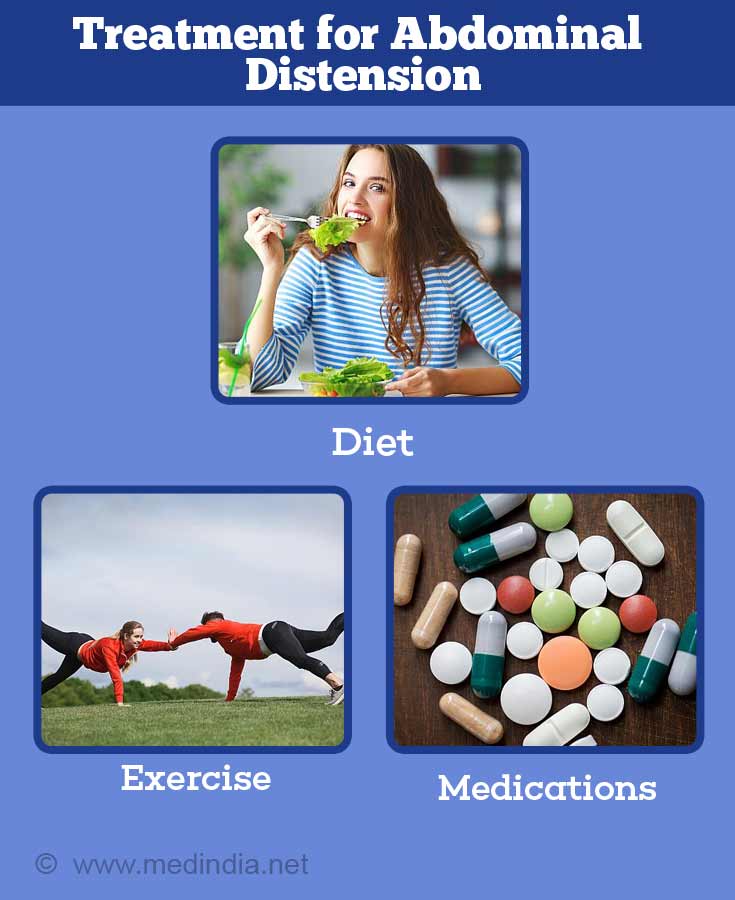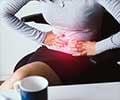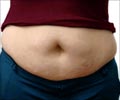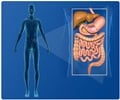- Abdominal Distention - (http://www.symcat.com/symptoms/abdominal-distention)
- Understanding Bloating and Distension - (https://iffgd.org/symptoms-causes/bloating-and-distension.html)
- Pathophysiology, Evaluation, and Treatment of Bloating - (https://www.ncbi.nlm.nih.gov/pmc/articles/PMC3264926/)
- Treatments for Abdominal Distension - (https://www.rightdiagnosis.com/a/abdominal_distension/treatments.htm)
- Distended Stomach (Abdominal Distention): Symptoms & Signs - (https://www.medicinenet.com/distended_stomach_abdominal_distention/symptoms.htm)
About
Abdominal distension refers to the swelling of the abdomen. The distension may be caused by either air (gas) or fluid collection. The accumulated substance causes an outward expansion of the stomach and waist beyond normal proportions.
While this is not a disease in itself, it is a symptom or indicator of other diseases like cirrhosis, heart failure, anemia or fluid overload.(1Abdominal Distention
Go to source)
Causes of Abdominal Distension
The common causes of abdominal distension are usually gas, Irritable Bowel Syndrome (IBS) and constipation. Other causes could be fibroids, ascites or intra-abdominal bleeding. Less common causes could be cysts, tumors and neoplasms.
Abdominal distension (either gas or fluid accumulation) can have many underlying causes. Commonly this condition can be caused due to overeating or swallowing excess air (aerophagia). Irritable Bowel Syndrome (IBS), constipation, dyspepsia and diabetes are also known to cause this condition.
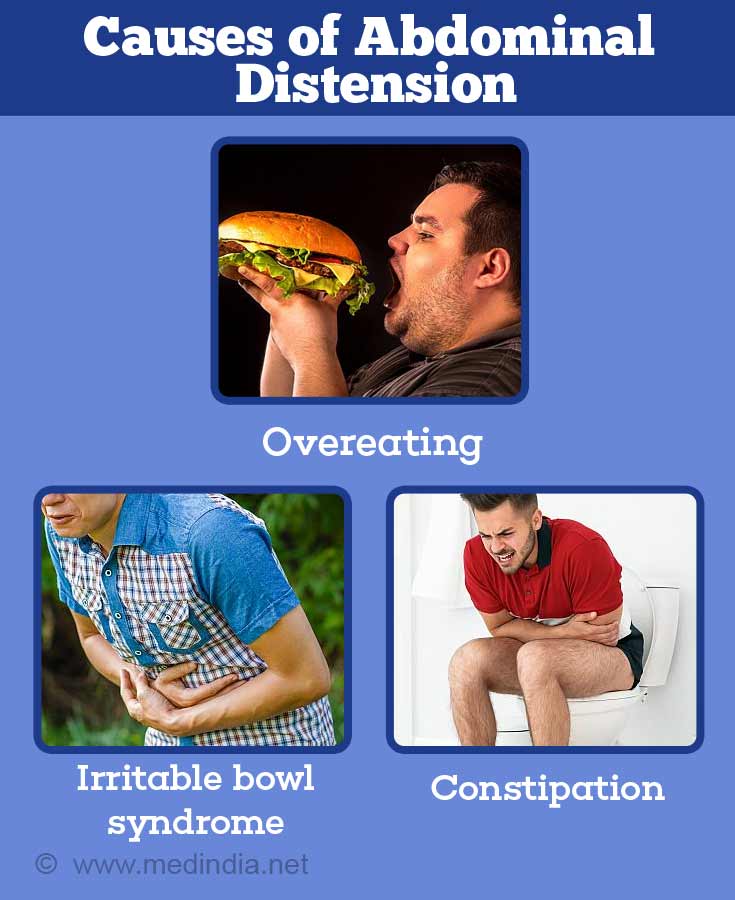
Abdominal distension also occurs in individuals with lactose intolerance, bacterial food poisoning, parasitic infections like giardia, bacteria like helicobacter pylori (H. pylori), celiac disease or peptic ulcers.
Abdominal distension may also occur due to mechanical and non-mechanical bowel obstruction. Mechanical bowel obstructions could be due to tumors or neoplasms, hematomas or foreign bodies. Non-mechanical bowel obstructions could be due to thrombosis, pancreatitis, peptic ulcers or biliary peritonitis.
Abdominal distension due to fluid collection can be commonly due to ascites caused by cirrhosis or congestive heart failure. In this case, the individual may experience edema (swelling) in the leg and ankles. Many women also experience distension before and during menstruation.(2✔ ✔Trusted Source
Understanding Bloating and Distension
Go to source)
Symptoms of Abdominal Distension
Symptoms of abdominal distension typically include belching, nausea, vomiting, diarrhea, fever, abdominal pain, shortness of breath, weakness and a feeling of stomach bloating. People suffering abdominal distension describe it as ‘feeling bloated.’ People experience a sense of fullness, pressing, Abdominal pressure, pain and cramps. Bloating is commonly because of gas accumulation in the stomach, small intestine or colon.(3Distended Stomach (Abdominal Distention): Symptoms & Signs
Go to source)
Diagnosis of Abdominal Distension
A careful clinical assessment is necessary to determine the cause of abdominal distension. Evaluation of the patient usually begins with a history and physical examination. Physical examination is usually done with percussing the abdomen. The clinician usually questions the patient for pre-existing diseases or other complications. The patient is also questioned about his/her diet, existing allergies and medications.
Lab investigations like Complete Blood Count (CBC), Liver Function Tests (LFT), urinalysis and kidney function. Imaging like ultrasound, barium x-ray, colonoscopy or endoscopy may be used for further investigations.
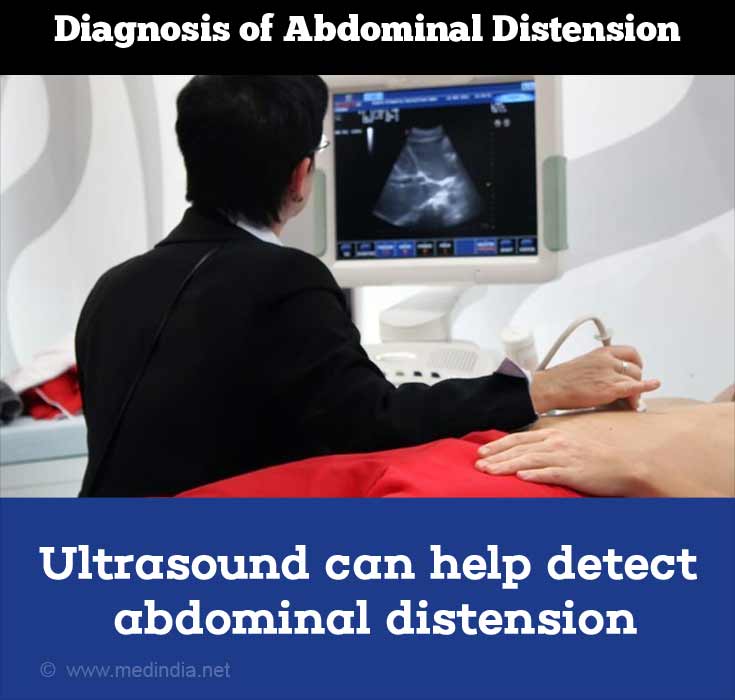
Treatment for Abdominal Distension
Treatment is individualized and depends on the underlying cause. The patient’s age and presence of other coexisting diseases determine the treatment plan. Sometimes modifications in diet and lifestyle help overcome the condition. Clinicians usually advise a low-spice, low-fat diet. Individuals with lactose intolerance are advised to avoid dairy products. Excess dietary fiber is also known to cause abdominal distension and patients are advised to keep to a low-fiber diet. Clinicians also advise sufficient exercise and recommend avoiding sleeping supine during the day.(4✔ ✔Trusted Source
Pathophysiology, Evaluation, and Treatment of Bloating
Go to source)
Certain enzymes and probiotics may be recommended. Prescription medications include antibiotics (usually gut selective antibiotics), low doses of antidepressants, antispasmodics and low doses of laxatives.
A holistic therapeutic approach involving diet and exercise, medications, enzymes and probiotics usually provides relief. Patients should be educated sufficiently on the condition and advised to make positive lifestyle changes to improve the condition.(5Treatments for Abdominal Distension
Go to source)
